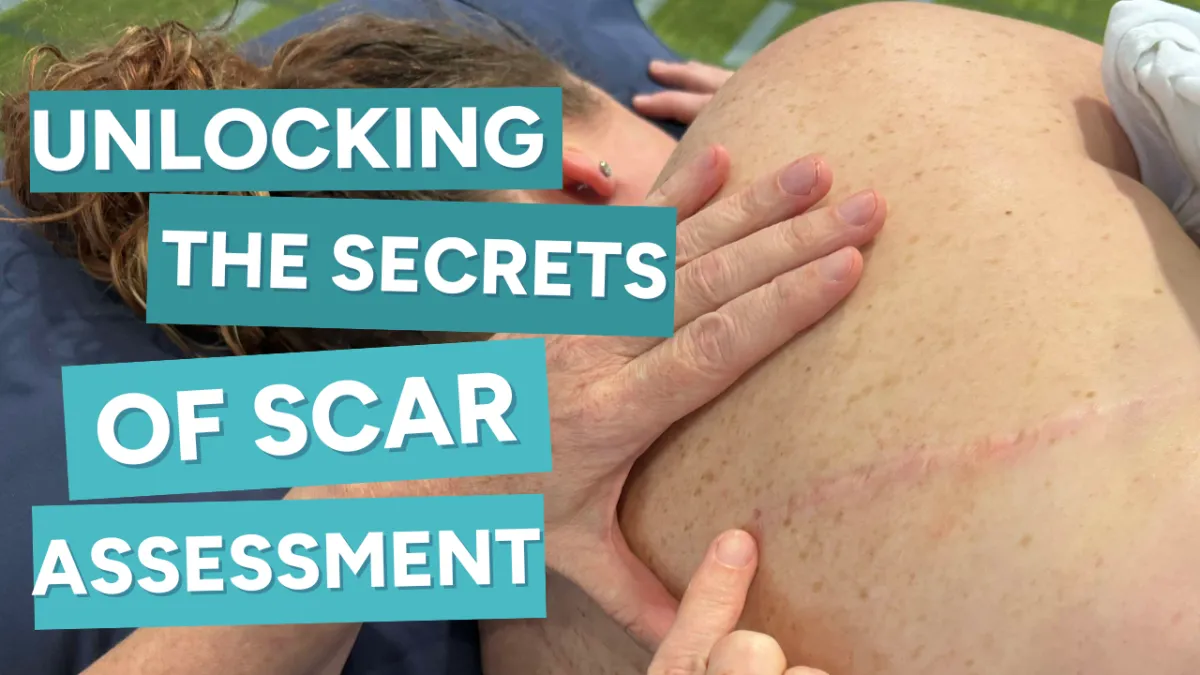
Unlocking the Secrets of Scar Assessment: More Than Meets the Eye
As a scar and lymphatic expert, I've seen firsthand how scars can hold hidden keys to a person's overall well-being. It's not just about the visible mark on the skin; it's about the intricate web of connections within the body, particularly the interplay with the lymphatic system.
The Hidden Impact of Scars
Scars, whether from surgery, injury, or trauma, can disrupt the delicate balance of the lymphatic system. This disruption can manifest in various ways, often masquerading as seemingly unrelated symptoms. This is why a thorough scar assessment is crucial.
Why This Blog?
I'm often asked by therapists:
"How do I effectively assess scars?"
"How can I integrate gentle scar therapy skills into my existing skillset, how to I use both Manual Lymphatic Drainage and scar skills?"
"How can I safely and confidently treat scars in a gentle caring way that also gives great results?”
This blog aims to answer these questions and emphasise why addressing the scar is so important to optimise patient outcomes. Learning to assess a scar is the first step in the Gentle Scar Program,
Delving Deeper: The Scar Assessment Process
A comprehensive scar assessment goes beyond a simple visual inspection. It's a journey to uncover the scar's full story and its impact on lymphatic function. Here's what this process typically involves:
Patient History: Unraveling the Scar's Story
Detailed Medical History: We begin by gathering crucial information about the scar's origin – was it from surgery, a sports injury, a burn, or something else? We also delve into the timeline: How long ago did the scar form? Have there been any previous treatments or complications? And are there any underlying medical conditions, especially those involving the lymphatic system or wound healing, that might be contributing factors?
Symptom Assessment: This is where we connect the dots. We ask the patient to describe their symptoms, which can be surprisingly diverse:
Swelling (lymphedema) in the affected area or even in seemingly distant locations.
Persistent pain or discomfort around the scar or elsewhere in the body.
A sensation of tightness or restricted movement, limiting mobility.
Changes in skin texture or appearance, such as thickening, hardening, or altered pigmentation.
Unusual sensations like tingling, numbness, or a feeling of heaviness.
Impact on Daily Life: We explore how the scar and its associated symptoms are affecting the patient's everyday life. Are they having trouble with daily activities? Is their work affected? What about their ability to enjoy leisure activities and maintain their overall quality of life? This step helps us understand the true burden of the scar.
Physical Examination: Seeing and Feeling the Scar
Visual Inspection: We meticulously examine the scar, paying close attention to:
Its location, size, and shape – is it linear, wide, or irregular?
Its colour – is it red, purple, light, dark, or hyper-pigmented?
Its elevation – is it raised, flat, or depressed?
Its texture – is it smooth, rough, or uneven?
Any signs of adhesions, where the scar tissue is attached to underlying structures.
Palpation: This is where our hands become our most valuable tools. We gently feel the scar and the surrounding tissues to assess:
Temperature – is the area warmer than usual, which might indicate inflammation?
Tenderness or pain – is the scar sensitive to touch?
Tissue consistency – is it hard, soft, or pliable?
Mobility – how easily does the scar move in relation to the surrounding tissues?
The presence of fibrosis, which is a thickening or hardening of the tissue.
Assessment of Lymphatic Function:
We look for signs of lymphatic involvement, such as pitting edema.
Unlocking the Body's Potential
By combining a detailed understanding of the scar's history with a thorough physical examination and effectively recording our findings, we can identify how it may be impeding lymphatic flow and contributing to a patient's symptoms. This comprehensive assessment is the first step in developing a targeted treatment plan to address the root cause of the problem and help the body heal.
Are you ready to take a deeper look at your scars? Then check out The Gentle Scar Therapy Program.
The only program of its kind internationally that delivers all the skills you need in one place at one time to safely and confidently treat scars in a gentle caring way that aligns the head, heart, and hands.







